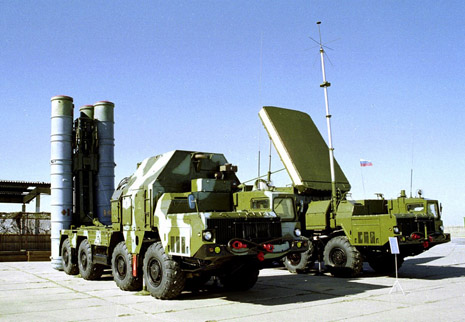Russia explained that its decision to sell the S-300 is related to Iran’s signing a nuclear deal with world powers, and from now on, the sale of the promised defense systems to Tehran should not cause concern.
The story of supply of these systems ended with the mutual satisfaction of Russia and Iran, but causes great concern in the US and Israel. These two countries can’t do anything about it, if only… Let’s sort things out for a start.
In 2007, Russia signed an agreement with Iran for supply of S-300 systems, but in 2010 the deal was postponed after the UN Security Council imposed tough sanctions on Tehran.
Both the US and Israel look at this deal from a slightly different angle, and they believe that they should fear Russian S-300 in the hands of Iran.
The S-300 is one of the most successful military products of the Russian defense industry, which has not only powerful missiles, but also high-performance radar. The S-300 can track up to 100 targets simultaneously and destroy them at a distance of up to 130 kilometers. Thus, this highly mobile system, which is collected and transported by trucks in a few minutes, will create enormous problems for the world community if Iran decides to continue to develop its nuclear program.
Tehran simply has to place the S-300 systems around its nuclear facilities, and then defensive systems will turn Iranian territory virtually into a no-fly zone. The US and NATO’s F-16s or F/A-18 Hornet planes will be shot down at the first attempt to attack.
Besides, the United States has too few (a few dozens) of the B-2 Spirit and F-22 Raptor stealth aircrafts, which can safely operate in areas defended by the S-300.
All this testifies to the fact that in the new reality, Israel has only one way out. That is to use a year or a year and a half, which will be spent on the process of delivery and installation of systems in Iran, to manage to develop a modern system of blocking the electronic control system of the S-300.
It was clear in April that Moscow would sell the systems to Iran. Moreover, it will take a few more months or perhaps years to use them. By that time, Israel will likely announce a new type of weapon that can neutralize the S-300’s combat ability.
In this case, the West will be confident that if Iran withdraws the current agreement on reducing the nuclear program, Israel and the US will be able to oppose their decision.
Saudi Arabia could help Israel finance these expensive developments since the strengthening of its eternal antagonist - Iran in the region creates a lot of problems for them as well.
More about:
















































